Pisac is a small town in the Sacred Valley, not far out of Cusco. We caught a local bus out there for the day, which was significantly cheaper than going with a tour group (around $2 instead of $30-40) with the aim of seeing both Inca ruins and the famous local markets.
The bus ride was lovely, winding down the valley through some amazing scenery. We arrived in Pisac in time for lunch, only to find that Mark had left his jacket on the bus, with his money and credit cards in the pocket. Panic ensued, followed by a good old-fashioned car chase where we jumped in a taxi and yelled “follow that bus!”
Luckily the bus stopped regularly and we knew which direction it was headed, so it didn’t take long to catch it. Mark jumped on, grabbed his jacket and ran off again, leaving the driver and passengers somewhat confused. The taxi ride there and back meant that we didn’t in fact save any money by catching the local bus, but it was a bit exciting nonetheless!
Pisac turned out to be a beautiful little town with an old plaza and some very good quality shops and cafes. There is a popular market, which sets up around a massive tree in the central plaza. It is possible to buy a huge range of hand made goods here, including the gaudy, colour clashing rugs that are a specialty of the area.
We recommend stopping for lunch at Ulrike’s Café, which serves up an amazing vegetarian menu del dia consisting of soup, a main meal and desert that was so good we came back for dinner before we left for Cusco at the end of the day!
Pisac also has a large Inca fort on the ridge above the town. The young Sapa Inca Pachacutec built a fort here after he conquered the local tribes. The Sacred Valley was and is a very fertile area with a temperate climate, and the Incas knew its agricultural value. A similar fortification was built in Ollantaytambo at the other end of the Sacred Valley and both are easily visited.
It is possible to walk up to Pisac but we opted to catch a taxi up and then walk back down to town. This turned out to be a great idea – the views are stunning and we would have missed them if we hadn’t taken a cab. Upon arrival we turned down a guided tour at ridiculous prices and struck out on our own (again, we recommend the Trail Blazer Guide as it has a map of the ruins).
The Spanish destroyed most of the structures at Pisac in the 1530s, but it is still possible to see that it would have once been quite grand. Highlights include an intihuatana stone, or hitching post for the sun, which can be found in an old Sun Temple (we will provide more detail on these later). There are also large agricultural terraces, aqueducts and look out points.
Perhaps the most interesting feature was the evidence of grave robbing. The ridge on the northern side looks like a beehive, full of little holes, which were once filled with mummies inside urns that were accompanied by various treasures to take with them to the afterworld. This area is off limits to tourists but it was still interesting to look at from a distance.
By the time we got back down into the main part of town, the weather had turned cold and windy. We did manage to have a quick wander through the market and buy a few little souvenirs. Most of the markets sell exactly the same products – standard llama clothing, scarves and beanies; rocks and crystals for the spiritual tourists; key rings; toys; jewellery etc. but we did manage to find some handmade silver jewellery, which was a nice souvenir to take home from such a pretty little town!

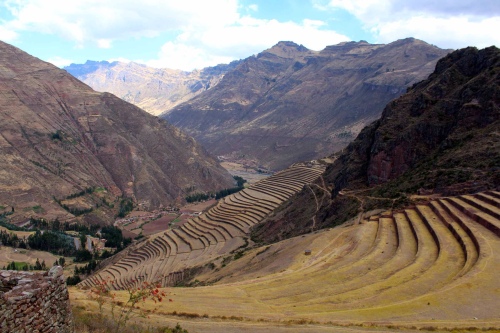

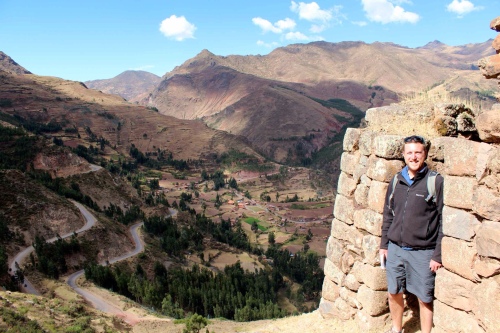
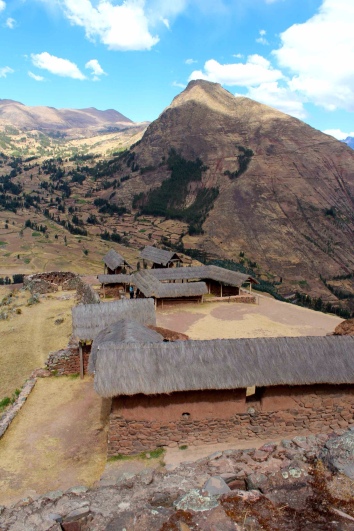
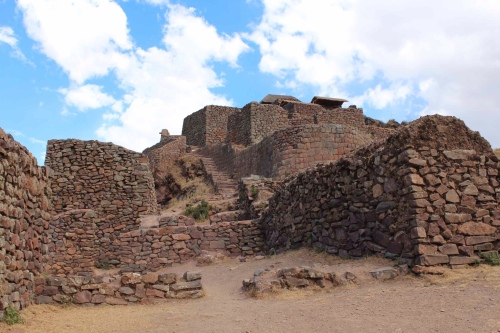


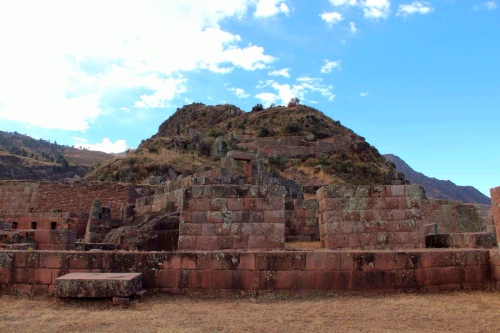

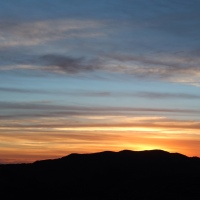

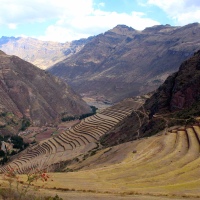

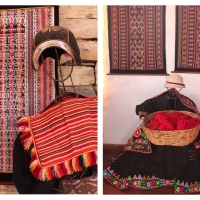
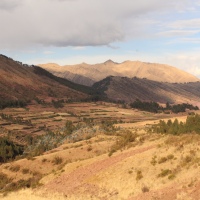
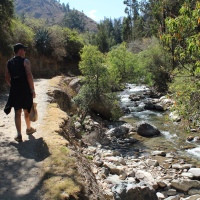
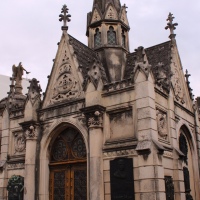


November 1st, 2013 at 7:42 pm
Loved Pisac. Such a beautiful area